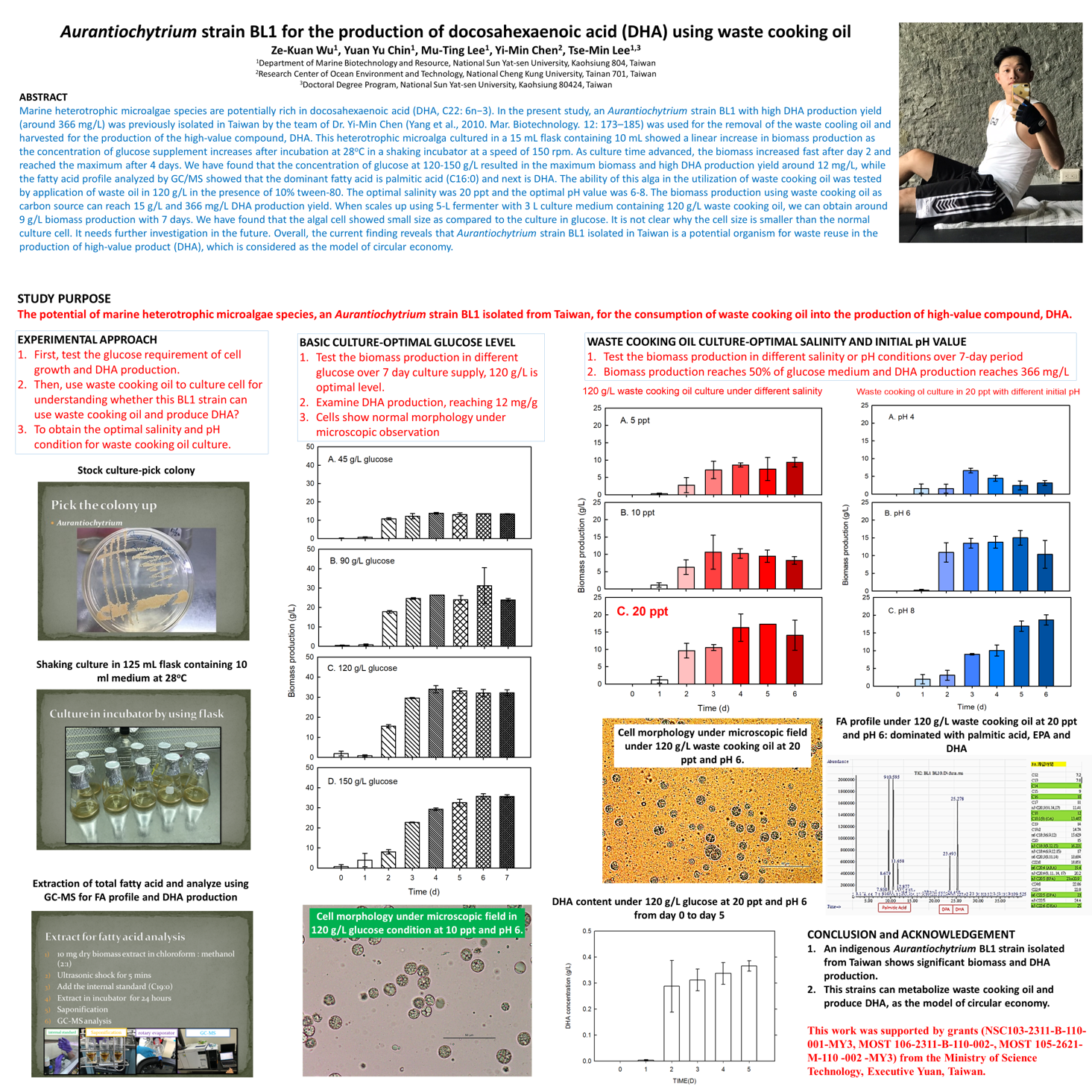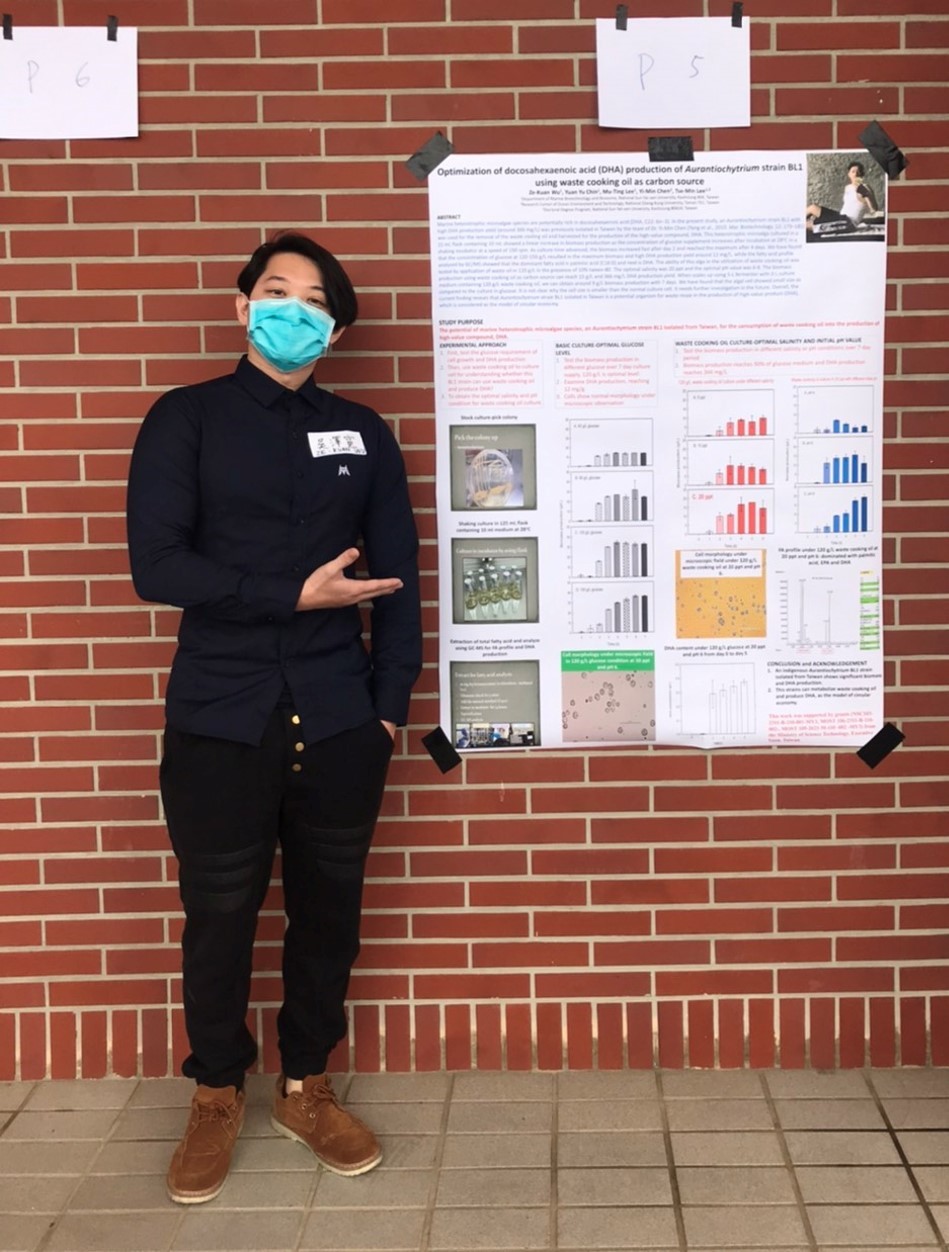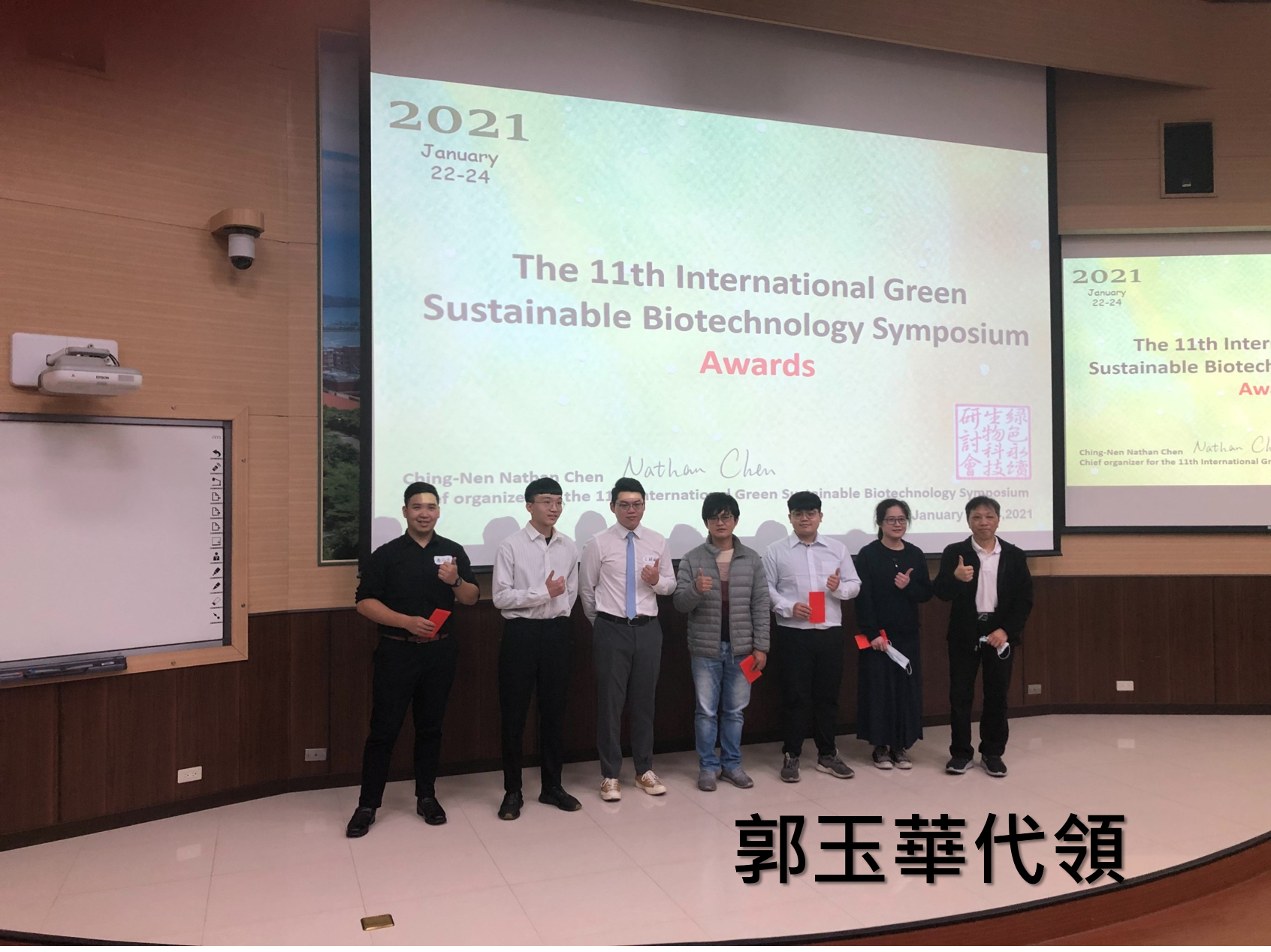【賀】本系碩士班學生吳澤寬同學獲得2021第11屆綠色永續生物技術國際研討會壁報論文佳作
2021第11屆綠色永續生物技術國際研討會-海洋生物科技暨資源學系碩士生吳澤寬榮獲壁報論文佳作 (20210126)



Aurantiochytrium strain BL1 for the production of docosahexaenoic acid (DHA) using waste cooking oil
Ze-Kuan Wu1, Yuan Yu Chin1, Mu-Ting Lee1, Yi-Min Chen2, Jo-Shu Chang3,4, Tse-Min Lee1,5
1Department of Marine Biotechnology and Resource, National Sun Yat-sen University, Kaohsiung 804, Taiwan
2Research Center of Ocean Environment and Technology, National Cheng Kung University, Tainan 701, Taiwan
3Department of Chemical and Materials Engineering, Tunghai University, Taichung 407, Taiwan
4Department of Chemical Engineering, National Cheng Kung University, Tainan 701, Taiwan
5Doctoral Degree Program, National Sun Yat-sen University, Kaohsiung 804, Taiwan
Thraustochytrids that are heterokonts, which were first discovered in 1934, are a worldwide distributed decomposer in marine environments that occupies a distinct ecological niche in marine ecosystems. It utilizes dissolved organic matter (DOM) and particulate organic matter (POM). Several species synthesize high-value compounds, such as docosahexaenoic acid (DHA, C22: 6n−3). We have isolated indigenous Thraustochytrids from Taiwan with the potential for the high production of DHA. Among them, an Aurantiochytrium strain BL1 with high DHA production yield (12 mg/L) was isolated (Yang et al., 2010. Mar. Biotechnology. 12: 173–185).
The purpose is to develop a circular economy model to recycle materials from waste using Aurantiochytrium strain BL1 to synthesize DHA by utilization of waste cooking oil. The main discoveries are 1. it shows the ability in the utilization of waste cooking oil (120 g/L in the presence of 10% tween-80) for the production of DHA; 2. the optimal salinity for waste cooking oil as carbon source was 20 ppt and the optimal pH value was 6-8. The biomass production using waste cooking oil as carbon source can reach 20 g/L and DHA production is 12 mg/L; 3. when scales up using 5-L fermenter with 3 L culture medium containing 120 g/L waste cooking oil, we can obtain around ?8 g/L biomass production with 7 days; 3. the boost of biomass during scale up process is a bottleneck for BL1 using waste cooking oil for the production of DHA; 4. the current finding reveals that Aurantiochytrium strain BL1 isolated from Taiwan is a potential organism for waste reuse in the production of high-value product (DHA), which is considered as the model of circular economy.














